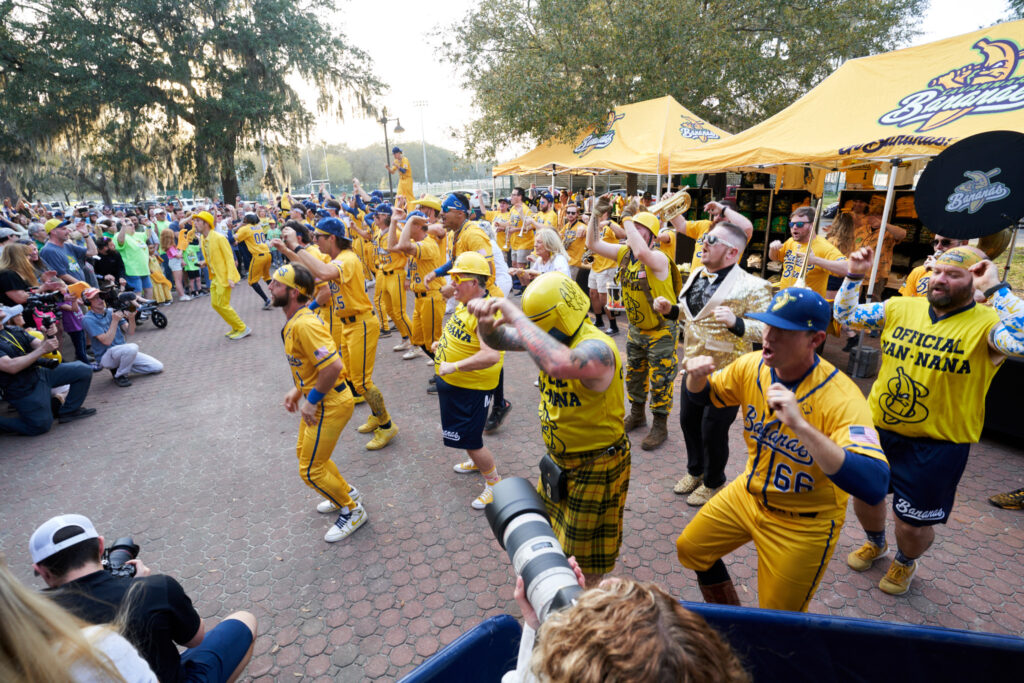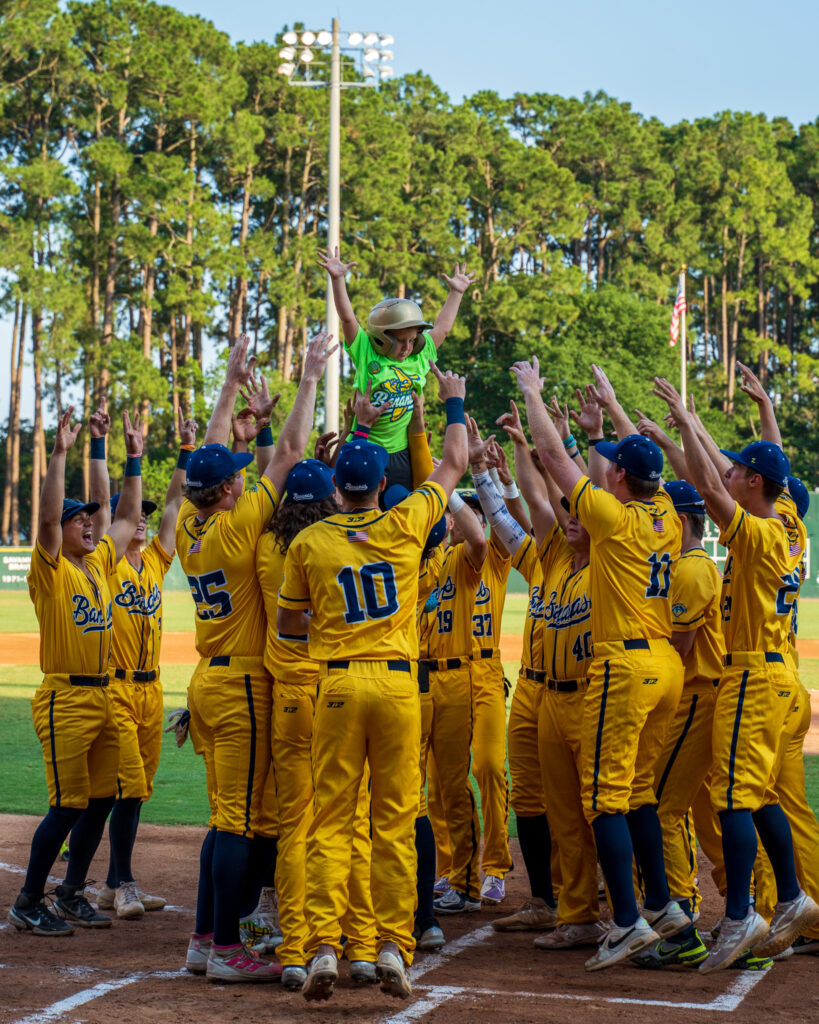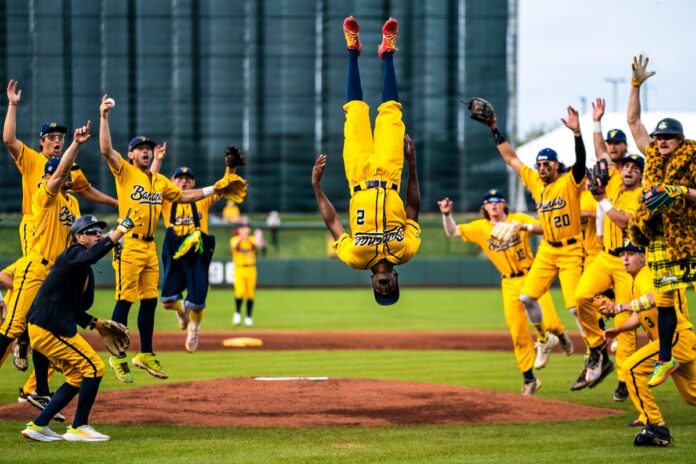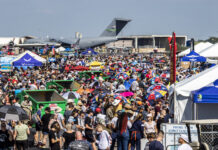Jesse Cole’s Compelling Case for Customer Service Above All
By Sean Cudahy
When Jesse Cole announced the creation of his new minor league baseball team in the historic, coastal Georgia city of Savannah in 2016, he faced daunting headwinds.
The team would host its home games in a 90-year-old stadium. They would play in front of a crowd unfamiliar with the team’s mascot or players. And most of all, they’d attempt to reverse a decades-long streak of lackluster fan attendance for previous minor league teams in Savannah.
When you consider all of that, it’s quite remarkable that, seven years later, Cole and his Savannah Bananas have become something of a national sensation. With its bright yellow uniforms and a mascot in a giant (you guessed it) banana suit, the team has millions of social media followers; pretty impressive for a home city boasting fewer than 150,000 residents.
But the success goes well beyond Tik Tok or Instagram.
Before even throwing a pitch in 2023, the Bananas extended an eye-popping sellout streak through the entire season. And the team is quick to warn hopeful fans signing up for their waiting list, “It is highly unlikely any tickets will become available.” No wonder; there are now more than 80,000 names of that waiting list!
Forget the Major League Baseball owners undoubtably salivating over the demand to see the Bananas.
The team’s rise to prominence — and the methods Cole credits for its success — are worthy of the question: Are there lessons air shows can take away from the rise of a semi-professional baseball team with a mascot dressed as a piece of fruit?

Changing the game…and the experience
If there’s one thing the Bananas have not done since arriving in Savannah, it’s follow tradition. Breaking norms seemed necessary. After all, previous Savannah minor league baseball affiliates had consistently failed playing by a set of standard rules now being reconsidered even at the big league level where team management has been eager to find ways to inject the game with more action.After brainstorms, changes and experiments over the team’s first few years in existence, Cole’s staff and players now present a most eccentric version of baseball dubbed “Banana Ball,” and a uniquely engaging fan experience that’s meticulously scripted from the moment the fans arrive, until the moment they leave.
“Banana Ball” is quite the departure from the standard nine-inning game.
Sure, there are distinctly aesthetic tweaks to the game, like a dancing umpire or a kilt-wearing pitcher (truly, it depends on the night). But there’s also significant rule changes to the game itself.
There are no walks allowed, and hitters can’t step out of the batter’s box between pitches. Teams earn points by an unheard of “winning the inning” scoring structure featuring pitcher-hitter “faceoffs” to break ties. If a player tries to bunt, he’s not just out; he’s thrown out of the game!
Oh — and perhaps the best news to those bemoaning the length of a baseball game — there’s a hard, two-hour time limit to the game.
Off the diamond, the experience is just as stark a contrast from the typical trip to the ballpark.
Players and mascots routinely visit the stands to mingle with fans. Food is all-you-can-eat. And the on-field entertainment — before, during and after the game — far eclipses the run-of-the-mill, between-inning programming most experienced baseball fans have seen a hundred times.
Upstairs, Cole’s leadership team has tracked marked financial success despite operating with no marketing budget, virtually no advertising, and without a roster populated with the type of name recognition you’ll find among the biggest stars playing for the New York Yankees or Boston Red Sox.
For Cole, it’s a strategy grounded in common sense.
“98% of our money comes from our fans,” he said. “So, who do we work for?”
The latter is a question that anyone hosting a major event should stop to consider from time to time.
Putting the fans first
 Like air shows, the average baseball game features a complex ecosystem of interests, from the preferences of performers (players), to vendors and corporate sponsors.
Like air shows, the average baseball game features a complex ecosystem of interests, from the preferences of performers (players), to vendors and corporate sponsors.
As Cole set out to reverse decades of baseball purgatory in Savannah, though, he implored his staff to focus their time and energy on a simpler — and, in fact, singular — population: the fans.
It’s safe to say his staff has received the message.
“If we don’t have a fan… if we don’t have the people showing up to do business with us…what else matters?” Bananas President Jared Orton said, seemingly echoing his boss.
While “keeping the customer” happy has long been a mantra of those in the service and hospitality sectors, turning “fans-first” into a true organizational maxim requires intention.
For their part, the Bananas have done away with virtually all corporate sponsorships and signage, opting instead for a smaller number of more strategic — perhaps more tasteful — sponsorships presented in conjunction with something the fans can experience directly.
For instance, you might see a local brewery’s logo in specific places in the ballpark where that company sells its product.
Indeed, the Bananas leave hundreds of thousands of dollars on the table annually by forgoing an outfield wall littered with advertisements, and an unending stream of announcements about car dealerships and banks, Cole said. But it’s a sacrifice he’s willing to make when he steps back and more deeply considers the fans’ interests.
“No one comes to our park to be sold to, marketed to, or advertised to,” he said.
For air show professionals, the Bananas’ steps to eliminate traditional advertising should be seen less as a clear course of action and more as an indication of just how committed Jesse and his colleagues are committed to the idea of “fans first.” Put another way, the take-away here is not that air show organizers should dismantle their sponsorship program in service of “fans first.” Rather, it’s a challenge to analyze whether your event is doing everything it can to make the entertainment experience of your spectators as good as it can be.
As an example, when the Bananas leadership meets to discuss a key issue, they often – literally — leave an empty seat at the table to ensure that the fan’s perspective is considered in every discussion. It’s an unconventional step designed to force staff to ponder how a fan might react to any comment…any decision…if they were sitting in the room, listening.
Say a ticket price hike is on the table, Cole has pointed out. What’s the fan getting for their money? Given the circumstances, would they find the decision to raise prices reasonable?
If fans feel like they’re getting good value for their money, Cole says, they’re likely to understand not just price, but value. And when they have that level of understanding, two important things happen. Prospective customers are more likely to attend. And, once they’ve attended, they’re more likely to come again. And, as any sales trainee will tell you, it’s a lot more efficient to make a re-sale to an existing customer than it is to go out and find an entirely new customer.
Eliminating friction points
 Some air show professionals may be tempted to dismiss the Savannah Bananas model as irrelevant to the challenges faced by air shows. The team’s Grayson Stadium seats just 4,000 spectators and the Bananas have 30 home games each year. So, there are clearly some significant differences between Banana Ball and air shows.
Some air show professionals may be tempted to dismiss the Savannah Bananas model as irrelevant to the challenges faced by air shows. The team’s Grayson Stadium seats just 4,000 spectators and the Bananas have 30 home games each year. So, there are clearly some significant differences between Banana Ball and air shows.
But air shows, like baseball games (and concerts, and festivals, and the lunchtime drive-thru at a fast-food restaurant) have a key common thread: pain points or “friction points,” as Cole calls them.
Friction points are those logistical challenges that can detract from an experience in ways big and small.
At Walt Disney World, it’s the long walks and the astronomical waits in line. At some hotels, it’s the bogged-down elevators when everyone’s trying to get downstairs for breakfast. At Aunt Suzy’s Thanksgiving buffet, it’s the dressing you have to backtrack to get because the salad was, for some reason, set up next to the pumpkin pie.Air shows are ripe with opportunities for the mitigation or even elimination of friction points…from traffic and parking to weather delays to toilet waiting lines. And Cole’s “Fans First” philosophy dictates that you take dead aim at them on behalf of the most important people at your show every year.
The Bananas have spent countless hours identifying and trying to solve friction points, in hopes of turning the most negative facets of a night at the ballpark into positive parts of the experience. The team embraces rain delays with a full set of contingency programming it rehearses, and then deploys the moment the drops begin falling too hard to play baseball.
The Bananas see food and beverage price-gouging as an all-too-common ballpark friction point, which is why the team folds bottomless burgers, hot dogs, popcorn, soda and other gameday staples into its $25 ticket. (In a noteworthy twist, the team says this shift to “all-inclusive” has made its cash-happy fans far more eager to spend extra money elsewhere, particularly on souvenirs)
Another example: picture the “exit experience” at an air show. Like at most baseball games, the fans gather their belongings and make the slow trek to their car; it’s second nature, but not exactly enjoyable.
With their knack for planning every moment of the fan’s experience, the Bananas see this as yet another “friction point”… and a missed opportunity at that. After all, market research from Disney indicates fans most vividly remember the day’s “high point,” but also its “end point.” (It’s a big reason why Walt Disney World frequently shoots off fireworks at the end of the night)
To lubricate this possible friction point, the Bananas turn the filing-out process into a celebration of sorts, with greetings, photos and autographs with performers and players…as well as “thank you’s” and “see you later’s” from staff.
An exclamation on the otherwise mundane end to the day can go a long way toward ensuring fans remember their experience positively, the Bananas have found.
Perfecting an event that truly stands out
There may be no comparison between the Savannah Bananas and air shows more notable than a need to appeal to fans of every age, background, and expertise level.
It’s a task unreachable without precise planning.
As much as the team infuses antics into its version of the sport in an effort to capture the attention of those without a scorebook in tow or a statistic front of mind, at its core, the Bananas play an adapted version of true baseball.
“We cannot just be the Harlem Globetrotters,” Orton acknowledged.
How does that translate to air shows? Event organizers should also be considering the interests of air show neophytes and air show groupies, of males and females, young and old, aviation illiterates and experts. Those that bought their ticket the first day they went on sale and those who made a last second decision to check out the air show. All of these sub-segments of an air show’s spectator base should be considered when building the show.The phenomenon of the Savannah Bananas is proof that walking such a tightrope is possible, but only after clearly establishing what makes its main event truly stand out from other activities with which people can occupy their time. For air shows, that’s incredible aerobatics and aerial demonstrations performed by some of the most gifted pilots on the planet. With that solid foundation, the Bananas have taught us that the entire event must then be scripted, from beginning to end, to offer world-class entertainment while keeping fans engaged. Remember: When a Bananas fan catches a foul ball in the stands, it’s an out. When the Bananas score their first run of the game, the entire team gets out of the dugout, goes into the stands and celebrates with fans.
Indeed, truly putting the fans first is hard work. But, as the leadership behind Savannah’s hottest-ticket event has proven, what could possibly be more important?
Banana Ball Rules
- Every inning counts. The team that gets the most runs in an inning gets a point. The first team that reaches five points wins the game.
- Two hour time limit. If the game is tied at the end of two hours, the game will go into a showdown to determine a winner.
- No stepping out of the batter’s box. If a batter does, it’s an automatic strike.
- No bunting. If a batter bunts, he will be called out and thrown out of the game.
- Batters can steal first. If a passed ball or wild pitch happens during any pitch of an at-bat, the batter can take off to first.
- No walks allowed. If a pitcher throws a fourth ball, the batter can sprint to first base. The catcher has to throw the ball around to every defensive player on the field before it becomes a live ball, allowing the hitter to advance to whatever base he can get to while every defensive player touches the ball.
- No mound visits from the coach, catcher, or any other players.
- If a fan catches a foul ball, it’s an out.
- Ties are settled using an entertaining tiebreaker. It’s too complicated to explain here, but it’s the baseball equivalent to a soccer or hockey shoot-out with just the catcher, pitcher and a single defensive player fielding hits.
What Can Air Show Professionals Learn from Banana Ball?
- Every entertainment event offers ideas and pearls of wisdom. Films, theater and television. Sports and music. InstaGram and Tik Tok. We just need to be open-minded enough to recognize those tips and ideas, and apply them to the challenges and opportunities we face in the air show community. Adapt and adopt. Repeat as needed.
- First and foremost, we are entertainers. That truism can sometimes be lost in the details of preparing for our air shows, but all of those issues and responsibilities are the means by which we accomplish our primary mission: to entertain and inspire. Safety must always be paramount, but entertainment should always come in a close second. And, when it doesn’t, we have by definition lost sight of our purpose.
- Don’t follow tradition for tradition’s sake. If the standard way of running your air show isn’t working, try something new. Break the mold. Do something different. Experiment. What works in Oshkosh, Wisconsin or Houston, Texas may not work for your show. Don’t be hesitant to challenge convention if it’s not working for you.
- Every aspect of the air show can provide entertainment. In the parking lot. With the static display aircraft. During the flying portion of the program. As the spectators leave the ramp. Every bit of your show can and should be seen as a chance to provide entertainment to your audience.
- Eliminate friction points. Anything that stands between your spectators and their enjoyment of your event is a friction point. And air shows can sometimes have lots of them: traffic, lack of shade, dirty portable toilets, and bad weather, to name just a few. Make it your organization’s purpose to eliminate or mitigate all friction points.
- Fans first. If you make it more than a platitude, if you make it an operating philosophy, a genuine commitment to putting the fan’s interest ahead of all others (except safety) can be immensely liberating. “Fans first” can become the benchmark against which you measure all of your decisions about your show…from performer variety and ticket prices to marketing and business strategies.








